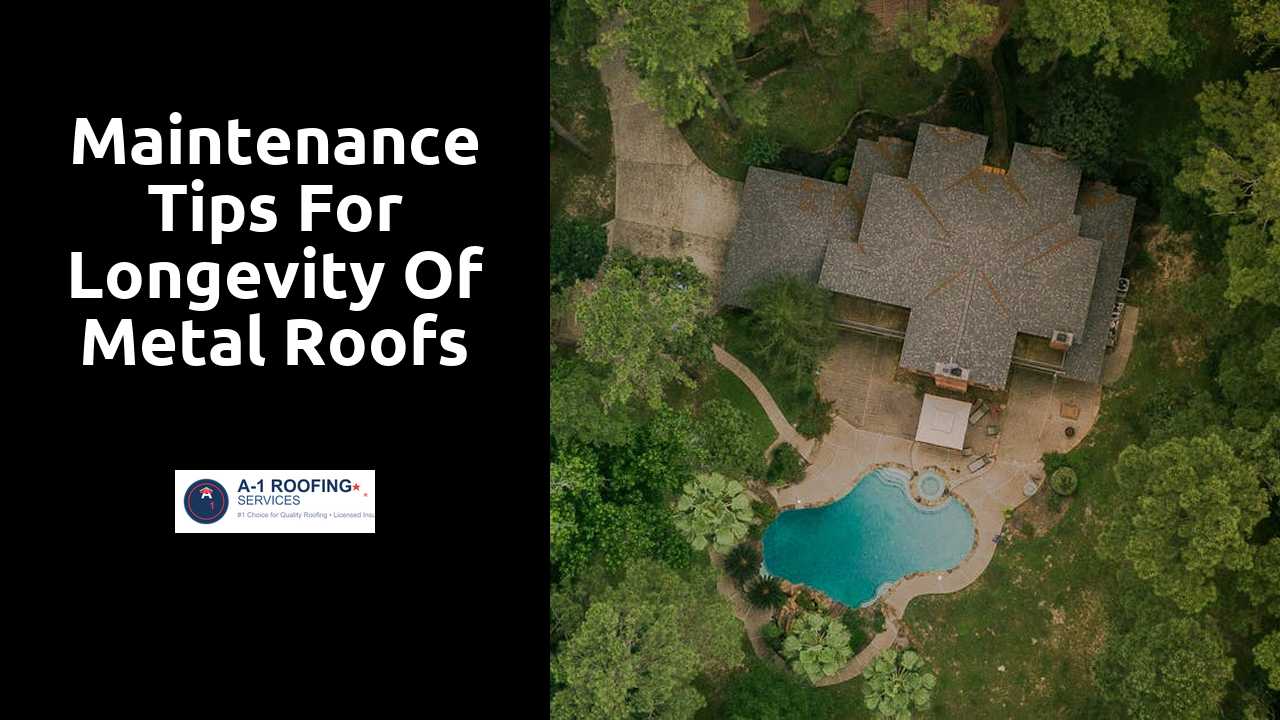
Maintenance Tips for Longevity of Metal Roofs
Table Of Contents
Managing Overhanging Branches
Overhanging branches can pose significant risks to metal roofs. During storms or high winds, loose branches may break off and cause damage. In addition, leaves and debris that accumulate in the gutters and valleys can lead to water buildup, which increases the potential for rust and corrosion. Regular inspections of trees surrounding your property can help identify branches that need trimming. Maintaining a safe distance between your roof and the nearest branches is essential for protecting the roof's integrity.
Proper pruning techniques not only enhance the appearance of your landscape but also ensure your roof remains sheltered from potential harm. It is advisable to trim branches that are within six to ten feet of the roofline. A professional arborist can help assess tree health and determine the best approach to pruning. By creating a well-managed space between the branches and your roof, you can extend the life of your metal roof while minimizing maintenance needs.
Here is a great resource for anyone looking to expand on this topic.
Pruning Techniques for Roof Protection
Regular pruning of overhanging branches is essential to protect metal roofs from potential damage. Limbs that grow too close can scrape the surface during windy conditions or accumulate rainwater, leading to rust, corrosion, or deterioration over time. Trimming these branches not only safeguards the roof but also improves the overall health of the trees, allowing for better air circulation and sunlight penetration.
When pruning, focus on eliminating dead or weak branches first. This technique minimizes the risk of breakage during storms. Utilize proper tools, such as pole saws or loppers, for higher branches and ensure that cuts are made at a slight angle to promote healing. Regular assessments of the surrounding trees are advisable to stay ahead of any potential risks to the integrity of the metal roof.
Insulation and Ventilation
Proper insulation is crucial for the overall performance and longevity of metal roofs. Insulation prevents overheating in summer and minimizes heat loss during winter months. This balance reduces energy costs while enhancing comfort within the home. Using high-quality insulation materials like fiberglass or foam board will help achieve an effective barrier against temperature fluctuations. Additionally, a well-insulated attic can contribute to the longevity of the roof by reducing moisture build-up, which can lead to corrosion over time.
Ventilation plays an equally important role in maintaining the integrity of metal roofs. Proper airflow helps in regulating temperatures and moisture levels, which can significantly impact the lifespan of roofing materials. Ventilation systems should be designed to allow fresh air to enter while enabling stale, humid air to escape. Installing ridge vents, soffit vents, or gable vents can promote efficient airflow. Ensuring that the attic space remains well-ventilated not only combats heat buildup but also prevents condensation that can lead to rust and deterioration of the metal surface.
Optimizing Your Attic Space
Efficient attic space management significantly impacts a home’s overall comfort and energy efficiency. Adequate insulation prevents heat from escaping during colder months, leading to lower energy bills. Proper ventilation allows for the free flow of air, reducing the risk of moisture buildup that can affect both the roof and the structure of the home. Establishing a balance between insulation and ventilation is essential for maintaining a stable indoor environment.
Utilizing the attic for storage can also optimize the home's use of space. However, it’s crucial to keep the area well-organized and free of excessive weight to avoid stressing the roof structure. Implementing labeled bins and shelving helps maintain organization. Regularly inspecting stored items for signs of dampness or pests can prevent future issues. Ensuring that the attic remains clutter-free not only allows for better airflow but also facilitates easy access for any maintenance tasks.
Snow and Ice Management
Winter weather can create significant challenges for metal roofs, particularly with the accumulation of snow and ice. Heavy snow loads can lead to structural stress, while ice dams can trap water on the roof's surface, potentially causing leaks and damage. Regular inspections are crucial during the colder months to identify any build-up early and address it before it escalates. Keeping gutters and downspouts clear of debris can help water drain properly and reduce the risk of ice formation.
When dealing with snow and ice, safety should be a top priority. Use a roof rake to gently remove snow from the lower sections of the roof while standing at a safe distance from the edge. Avoid using sharp tools or standing on the roof itself, as this can cause damage or increase the risk of accidents. If ice dams do occur, consider applying a calcium chloride product or hiring a professional to handle the removal in a way that protects the roofing material. Maintaining a proactive approach will ensure the longevity and performance of your metal roof.
Safe Removal Techniques
During winter, accumulating snow and ice can pose a threat to the longevity of metal roofs. Addressing this buildup requires caution and the proper tools to prevent damage. Use a roof rake with a rounded edge to gently pull snow down from the edges without causing scratches. It’s advisable to work from the ground level whenever possible, minimizing the risk of falling and ensuring a safer removal process.
If ice dams form along the eaves, consider using a combination of heat tape and manual removal. Installing heat tape can help prevent new ice formation, while a broad-bladed shovel can assist in carefully dislodging existing ice. Avoid using sharp tools that may gouge or scratch the metal surface. Regular inspections during winter months will help identify problematic areas early on, allowing for timely intervention and maintenance.
Related Links
Top 5 Myths About Metal Roofing DebunkedThe Role of Metal Roofing in Enhancing Energy Efficiency